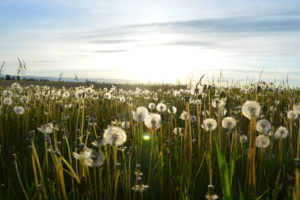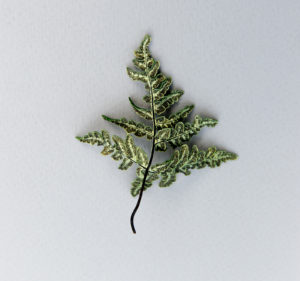eated in a wooden kayak at the mouth of Sycamore Slough, Danny Slakey peers through his hand lens at a plant no bigger than a sprig of thyme. Carefully, he inspects the small purple flowers growing along its stem, turning the specimen in his hand. Beside him, Brian Keelan reads from his iPad, asking Slakey questions like, “Paired in the axil? Alternate, spatulate leaves?” When it comes to plant identification, the devil is in the details.
It’s early morning and already the sun beats down hard and hot, making the clouds seem particularly low and the water sparkle in the sunlight. In the distance, Mount Diablo rises from the valley floor, its silhouette tinged by the color of the sky. The slough is dotted with dense reed islands and muddy outcrops surrounded by thick mats of water hyacinth, the invasive plant that has established itself throughout much of the central valley.
Keelan had first spotted the plant near one of those larger islands. The botanizing pair continue their back and forth, checking off potential species from a mental list. Slakey is not one for exaggerated excitement. But as he calls the rest of the kayak group over to take a closer look at the plant, you can tell there’s something special about this one.
Slakey is a botanist at the California Native Plant Society (CNPS) and is leading a group of volunteers on a rare plant survey of the Sacramento-San Joaquin River Delta, focusing on Sycamore Slough.
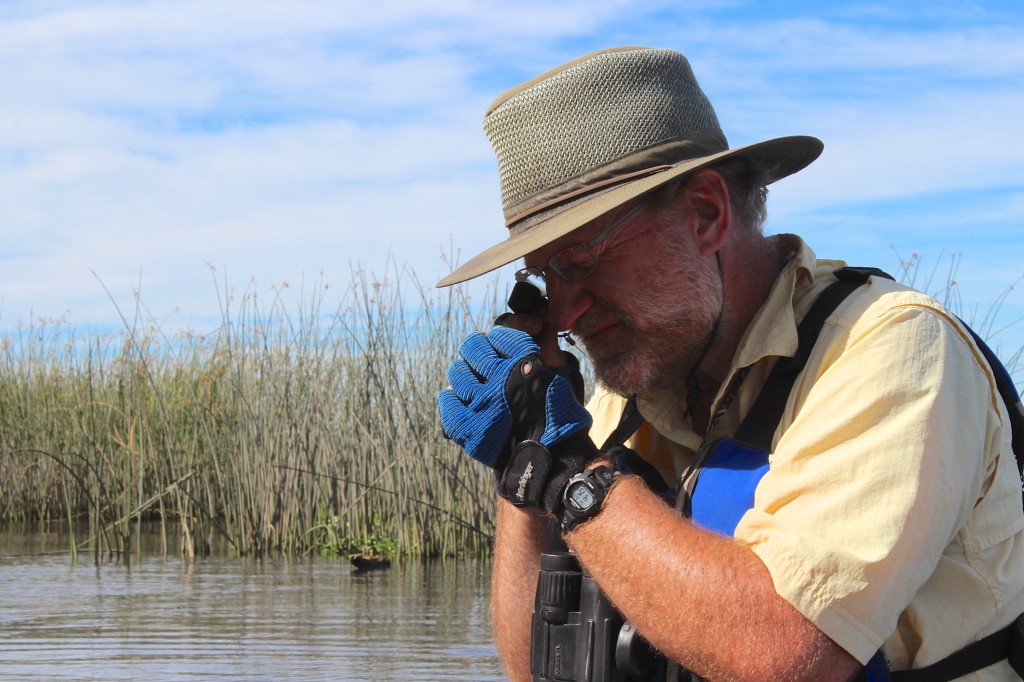
ince 2010 the CNPS has been conducting rare plant treasure hunts throughout the state, engaging plant enthusiasts through citizen science and focusing on areas where proposed projects could significantly alter existing rare plant habitat. Several of the surveys have been undertaken in the Mojave Desert, where only a small percent of California’s desert flora has been documented and where massive solar power development projects are being planned.
In the Delta, the state is proposing a huge construction project centered around twin tunnels dug under the Delta to deliver water from the northern part of the watershed to farmers in the San Joaquin Valley and urban consumers in Santa Clara County and Southern California. The proposed “peripheral tunnel” project is paired with the Bay Delta Conservation Plan, which aims to improve habitat for native species as mitigation for the tunnels. Having baseline data for what is here now is an essential prerequisite for understanding what species need to be taken into account and Slakey, so far, is optimistic.
“It seems there should be minimal impacts to the rare plants in the Delta,” Slakey says. “Overall, it sounds like the Bay Delta Conservation Plan may help to make for improved habitat restoration.”
Paddling down Sycamore Slough, a tributary of the Delta some 14 miles west of Lodi, the human touch is not hard to find: a stream of motor boats and jet skis regularly zoom past, sending ripples through the water while just out of sight, beyond the riprap levees, sunflower fields crisp in the central valley heat.
“You can have a rare plant that’s rare because it has always been rare and that’s just the way it is,” Slakey says. “But you can also have a plant whose habitat has been so altered or destroyed that it’s gone from being a common plant to a rare plant; the Delta is a good example of the latter.”
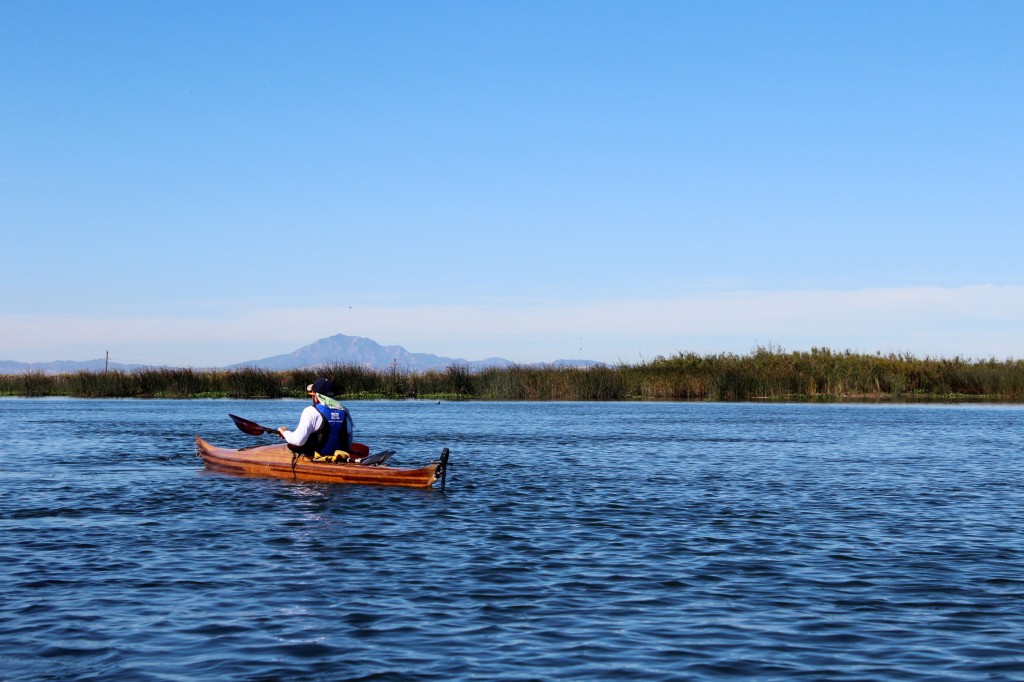
hat’s the kind of plant that Brian Keelan found on a mud float no bigger than a bowling ball, and that Slakey and the volunteers are gathered around. After deliberating, Slakey, with the help of Keelan, identifies it as the side-flowering skullcap (Scutellaria lateriflora) a perennial herb of the mint family. It shares the same fresh smell and fuzzy leaf texture of its more common cousins but certainly won’t be found in any teabags. In California, this species is known from only 12 populations, most of which are in the Delta — and it has never been documented in the location where Keelan just spotted it.
Slakey explains that the last time it was recorded in the slough was in 1892 by the early Californian botanist Katharine Brandegee. But even then, it was found on Bouldin Island, about two miles south of its current location, meaning this is most certainly a new population.
“Also, it’s never been seen flowering in California in July, so we now know that the blooming period is a little longer than previously known,” Slakey says.
As the day continues, the weight of the sun makes nature’s colors pulse. Even the purples and greens of the water hyacinth glisten in the sunlight. On the bank above the levee an abandoned pesticide truck rusts into the mud—a stark contrast to the life in the slough itself.
Now in its fourth season, the CNPS rare plant treasure hunt program has expanded to include sites in the Bay Area and central coast. To date, citizen scientists along with professional botanists have contributed data on nearly 2,000 rare plants to the California Natural Diversity Database.
“Field botany in California is fascinating because of the range of habitats created by varying elevation, latitude, soil and precipitation,” says Keelan, a volunteer who has participated in several CNPS rare plant treasure hunts. “Many native species are quite restricted in distribution because of the combination of factors they require, so it’s challenging and rewarding to search them out.”
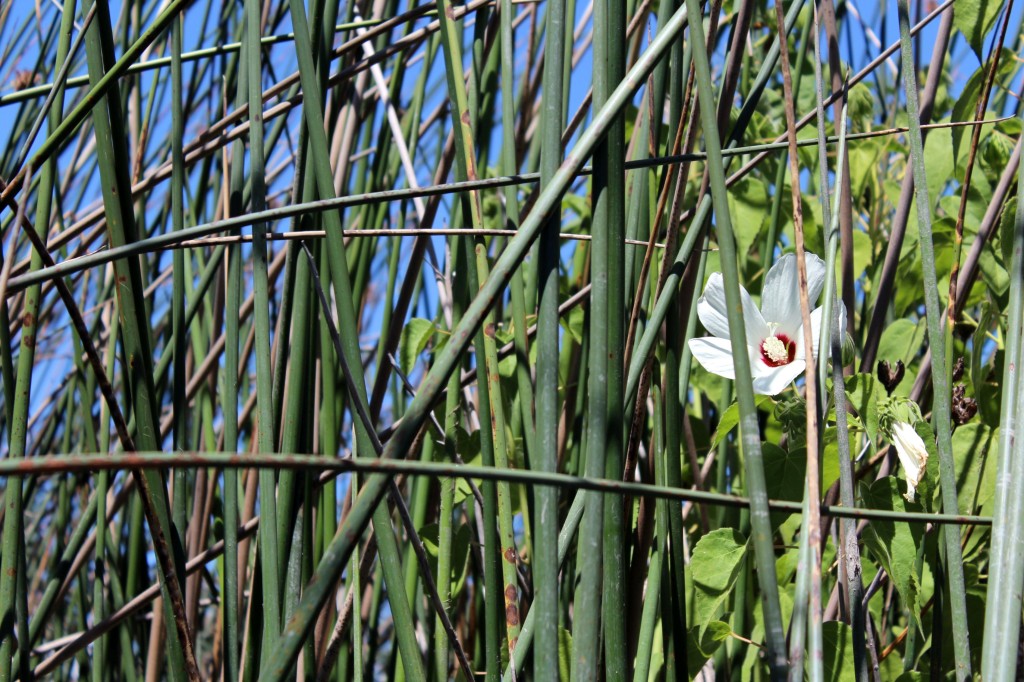
ear the end of the trip, Slakey points out one last plant, towering over the edge of a levee. With its white petals and deep pink center, the wooly rose-mallow (Hibiscus lasiocarpus var. occidentalis) seems to belong more in the tropics than in the Central Valley and is one of the prettier rare plants in the Delta. We have seen it several times throughout the day, poking its petals through the reeds along the levees and as Slakey explains, it is more common than other rare plants in the area.
It is late afternoon and the group reconvenes by this hibiscus with specimens and notes in tow. Some stop to take photos and stretch in their kayaks, while the steadfast botanists continue searching the area, hoping for one last rare plant. But some four miles into the slough, Slakey decides it is time to head back. And facing that rising Mount Diablo, the paddle back begins.
Alessandra Bergamin is the Bay Nature Online Editor.




